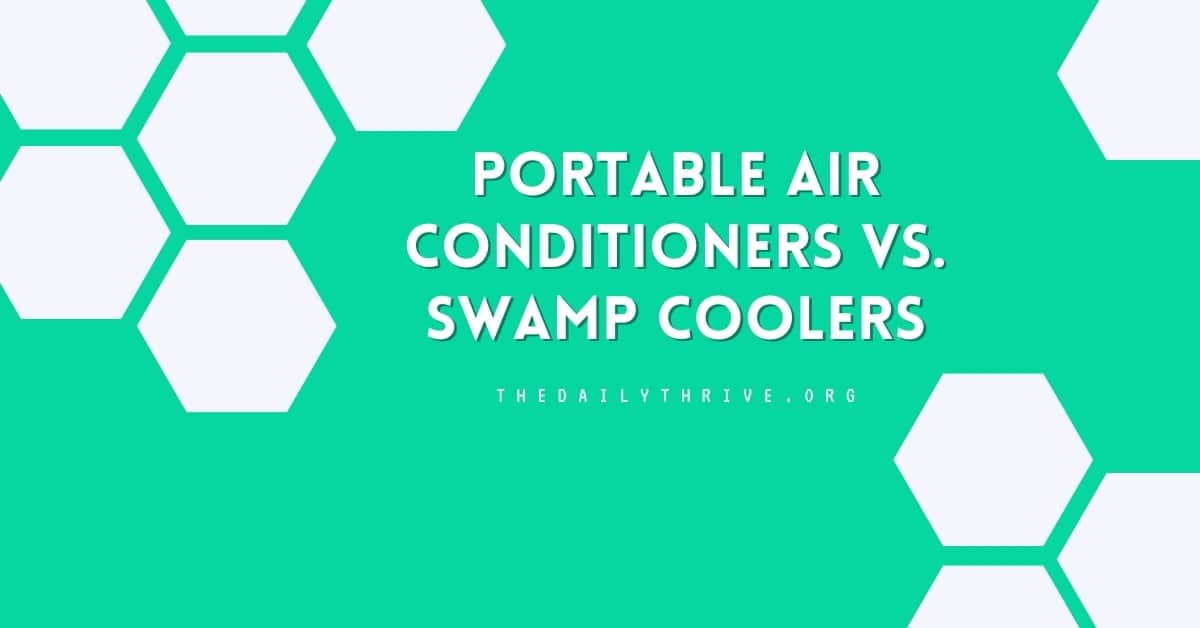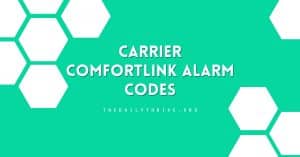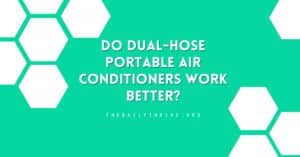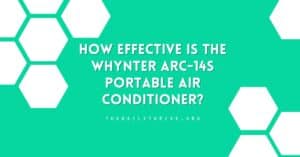Most portable air conditioners and evaporative swamp coolers are truly portable in that they usually don’t require permanent installation, they have casters built-in, and they can easily be moved from room to room. Portable ACs use the same heat exchange principles as central or window air conditioners. Swamp coolers use simple evaporation to provide a low-cost, low-technology alternative to refrigerated air conditioning.
Each is best suited for a different type of climate. Because portable air conditioners also act as dehumidifiers and whisk moisture out of the air, they’re best suited for humid areas. On the other hand, dry, arid areas such as the American Southwest fare better with swamp coolers, as these add moisture to the air.
While both products perform the same function – cooling our homes – the two use very different types of cooling technologies, and the terms “portable air conditioner” and “swamp cooler” are often mistakenly interchanged.
In order to decide which type of portable cooler is best for your cooling situation, consider important factors such as:
- the method of cooling you wish to employ
- the size of the room or area you wish to cool
- energy efficiency ratings
This portable cooling guide will help take the guesswork out of choosing a portable air conditioner or evaporative swamp cooler.
Portable ACs
- remove humidity from the air
- operate best in closed environments
- recirculate the same air over and over
- usually have better cooling capacities
Swamp Coolers
- add humidity to the air
- provide a constant supply of fresh air
- only provide an incremental cooling effect
Because of these significant differences, choosing the right one depends on important factors, such as the area in which you live, your cooling needs, and how much you can afford to pay for energy costs.
Portable Air Conditioners Pros & Cons
Portable air conditioners are great alternatives to window or ductless air conditioners and can even supplement existing central air conditioning systems. They’re also great for apartment buildings that do not permit window units or homes with windows that cannot properly accommodate permanently installed window air conditioning units.
They are usually mounted on casters, and since permanent installation isn’t required, they can be moved from room to room as needed. However, since an exhaust hose must be run outside, these units must be placed near a window.
Portable ACs lower temperatures by using a refrigeration cycle, drawing air from the room over a condenser coil where it is cooled and dehumidified. Water condensate pulled from the air is collected in a bucket while an exhaust hose expels heat outdoors. Many portable air conditioners feature auto or self-evaporative technology, which is able to expel most moisture through the exhaust hose, so the bucket rarely needs to be drained.
Pros
- Versatile and can be moved from room to room
- Ideal for areas that are not covered by central air conditioning or those which cannot accommodate permanent AC installation
- It can be up to 50% more energy efficient than some central air conditioning systems because only certain rooms are cooled, as opposed to entire homes
- Help dehumidify the air
Cons
- Need to be vented
- It can be slightly more expensive than a central air conditioning or mini-split system with a similar cooling capacity
Swamp Coolers Pros & Cons
Energy consumption for home air conditioning accounts for almost 5 per cent of all electricity produced in the United States – at a cost to homeowners of over 15 billion dollars. These costs may leave many people sweltering in the summer months. However, for those living in dry climates and/or small spaces, swamp coolers (also called evaporative coolers) may be just the solution.
Throughout the ages, civilizations have utilized the natural process of evaporation as an ingenious method to combat heat. The windcatcher was invented in Iran thousands of years ago. Wind shafts strategically placed on rooftops caught the wind, passed it through water, and transferred cooled air into a home. Even today, Iranians still use modified windcatchers, which are actually modern evaporative coolers.
Swamp coolers are relatively simple devices: a box-like frame contains a fan that is walled in by moistened pads. In order to cool the air, the fan takes in hot air from the room, sends it through the moist pads, and cools it up to 20 degrees. Essentially, this process can be likened to splashing water on your face on a hot day and feeling the coolness on your skin as it dries.
They are also quite versatile. There are models designed for cooling individual rooms in your home, while larger units are built for industrial applications, athletic fields, and even stadiums. Keep in mind that evaporative coolers are generally only suited for dry climates where the air is hot and the humidity is low (such as in the Western/Mountain states) as they add moisture to the air.
Pros
- Compact and portable
- Use substantially less electricity than an air conditioner for the same sized home (sometimes up to 75 per cent less)
- Relatively inexpensive to buy, install, and maintain
- Add moisture to the air in dry climates and prevents furniture and fabrics from drying out
Cons
- Only suitable for dry climates; high humidity in the air accelerates corrosion and causes condensation.
- Can use a substantial amount of water to provide cooling effects
Final Thought
While electric fans can oftentimes bring some relief from hot temperatures, they may not be sufficient in especially hot climates. Central cooling is such an important part of every summer, but some buildings, such as apartment complexes and warehouses, make installing standard air conditioning units cost-prohibitive or even impossible. In these situations, portable cooling units can be the answer.
Still not sure which sure is the right product for you? Drop your comment below – we’ll be happy to talk you through the process of choosing just the right portable cooling product to meet your needs.






